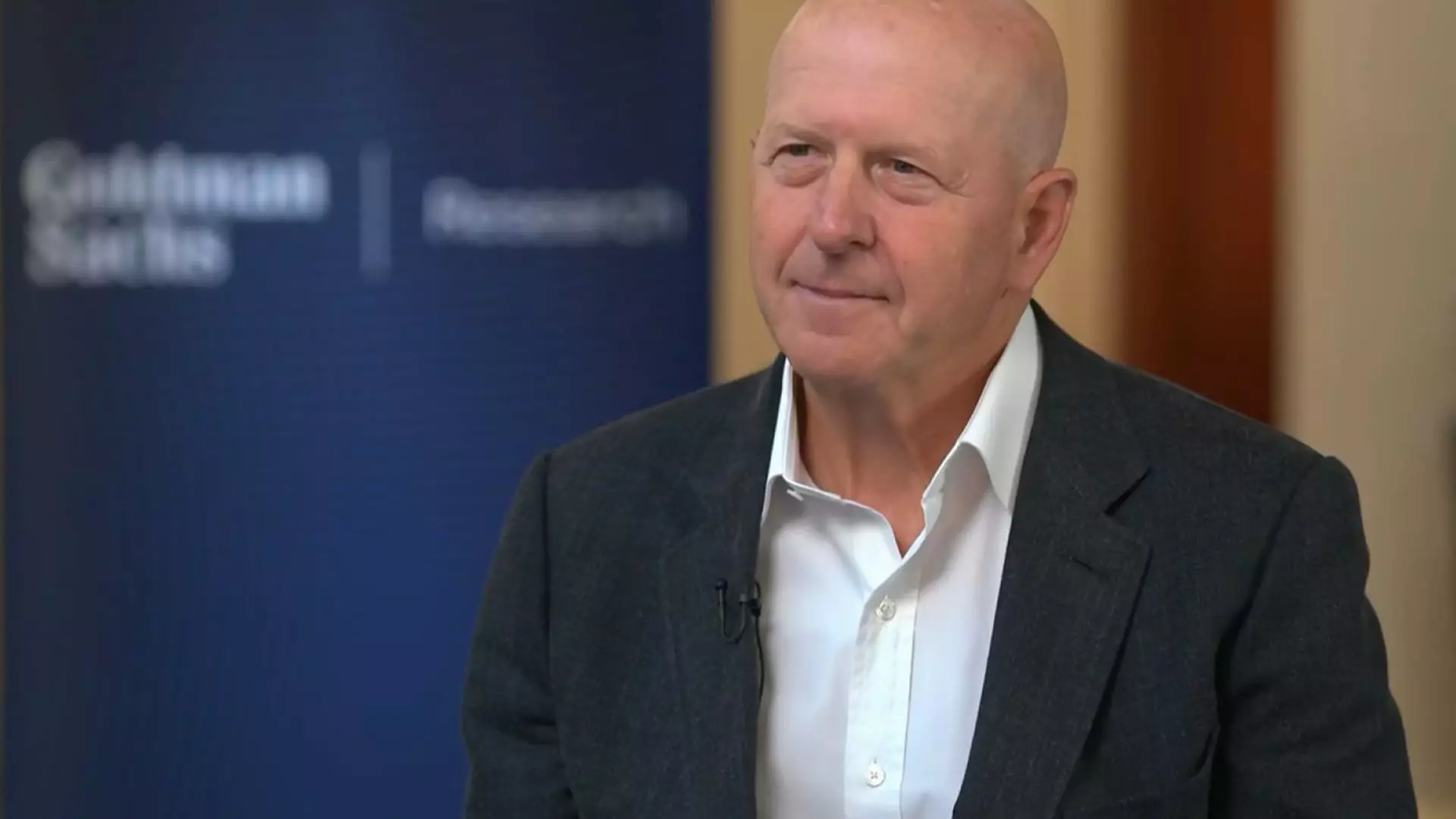Goldman Sachs has recently announced its first-quarter results that defied expectations, showcasing a seemingly robust performance driven by equities trading—a sector experiencing noteworthy volatility. Posting earnings of $14.12 a share, significantly exceeding the anticipated $12.35, the bank’s revenue of $15.06 billion also surpassed the $14.81 billion estimate. Yet, despite these impressive headline figures, a deeper dive into the report reveals a concerning narrative that underscores the fragility of the firm’s profitability and long-term viability.
While the notion of increased profits—up 15% year-over-year to reach $4.74 billion—could create a sense of triumph, the truth is far less rosy. The bank’s revenue growth of just 6% suggests that this surge is more of a fleeting moment than a sustainable trend. The sky-high equities trading revenue, which soared by 27% to $4.19 billion, is bubbling over in the current climate of market unrest but does not indicate a solid foundation for continued growth. Instead, it raises questions about the health of other crucial divisions and the bank’s overall strategy. With fixed income seeing only a 2% uptick and investment banking fees plummeting by 8%, there are significant cracks in what appears to be a gilded facade.
Management’s Optimistic Rhetoric in Times of Turmoil
CEO David Solomon expressed a sense of optimism amidst adversity, alluding to the uncertainties brought on by President Trump’s trade policies. This optimism feels almost out of place when juxtaposed against the backdrop of declining performance in key areas. Is it overly ambitious or simply wishful thinking to maintain confidence in the face of declining asset and wealth management revenue, which is down 3% from a year ago? Solomon’s assurances are likely meant to calm investors’ nerves, yet they may ring hollow to those who recognize the volatility that has enveloped the financial markets lately.
As the nation’s economic landscape becomes increasingly unpredictable, Solomon’s purported confidence seems more about maintaining stocks than confronting the realities of slumping advisory revenue. The results from the firm’s asset management division, where revenue fell below estimates, highlight a troubling trend that indicates significant weaknesses in sectors that once served as pillars of strength. Such inconsistencies detract from the narrative of a stable powerhouse weathering the storm of economic uncertainty.
Comparing Industry Rivals: An Ominous Outlook
Goldman Sachs cannot overlook the performances of its rivals, JPMorgan Chase and Morgan Stanley, both of which bested expectations through impressive equities trading gains of 48% and 45%, respectively. Their financial success during this era of disruption underscores the idea that Goldman is merely a player in a high-risk game rather than the leader it aspires to be. While Goldman celebrates its limited victories, its sense of achievement seems more misplaced than valid, given how swiftly market conditions can shift.
The market volatility fueling trading revenue raises questions about the sustainability of Goldman Sachs’s success. It’s imperative to reflect on whether such gains are a reliable barometer for genuine corporate health or mere reactions to transient socioeconomic conditions. Are these impressive trading figures indicative of a robust business model or a survival tactic in an uncertain economic landscape? With uncertainties surrounding global trade agreements and rising geopolitical tensions, Goldman’s dependency on equities trading for revenue growth invites scrutiny.
A Call for Strategic Reevaluation
Goldman Sachs stands on a tightrope, balancing its trading success with looming challenges. As much as management would prefer to highlight their financial victories, it’s crucial to recognize that sheer revenue figures may not accurately reflect the long-term health of the institution. The urgency of pragmatic recalibration is palpable. A focus on diversification and innovation seems more pertinent now than ever if Goldman wishes to breakout of the cyclic volatility defining its current trajectory.
While the recent earnings report is a testament to the bank’s formidable trading capabilities, it simultaneously encapsulates the significant risks that lie beneath the surface. Long-term investors and stakeholders should consider whether this approach is one that champions resilience and growth or merely patches over deeper, festering issues.


Leave a Reply